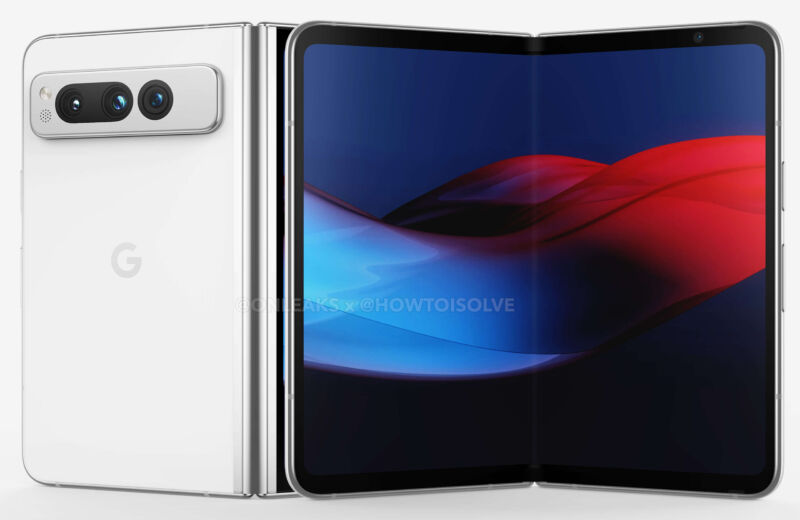
The Pixel Fold is a real phone! Google has been talking about building a foldable since 2019, and specific models have been rumored since 2021. Numerous delays and cancellations have been enough to make anyone wary about the long-rumored device, but now a growing chorus of rumors claims we'll see an announcement at Google I/O in May.
Over the weekend, though, for the first time, real-life images of the Pixel Fold hit the Internet. Android researcher Kuba Wojciechowski posted a quick video to Twitter of the Pixel fold opening and closing. It's not much, but it's the first confirmation we've seen that this is a real piece of hardware that exists outside of a computer screen.
😉😉😉 pic.twitter.com/zTpEo18K4y
— Kuba Wojciechowski :3 (@Za_Raczke) April 22, 2023
As usual, the previous renders from OnLeaks seem pretty accurate; we can see the front of the device, the slightest hint of the camera bar on the back, and the inside of the screen. Just like on the renders, the inside of the phone has bezels that are noticeably bigger than the normal design you'd get from Samsung or Oppo. The inner screen doesn't have a hole in the display for the camera and instead opts for the old-school layout of shrinking the screen to make room for a camera above the screen and then extending that dead space across the top of the phone. Did Google shrink the entire screen across that giant foldable just to tuck a camera into the top-right corner? It's a strange step backward when hole-punch displays are the default.
While bezels on a regular glass phone don't have a ton of usage, the bezels on a foldable are there for a reason. Normally displays are rigidly bonded to smartphone glass, which is glued to the phone's frame, but foldables need to fold, and the display needs to subtly shift around when you open and close it. That means the 'all-glue' construction isn't going to work, so foldable displays are usually partially glued on and left free-floating around the hinge area. A foldable's bezel is a raised plastic rim that runs around the perimeter of the display, keeping the floating sections of the display lightly attached to the phone body and preventing debris from going under the display and ruining it. Being raised also stops the two halves of the screen from grinding together when you close the phone. So while a foldable needs a bezel, no foldable, not even the Galaxy Fold 1, felt the need for something this wide.
Previous reports said the device should be around $1,700, and CNBC's report that this will have “the most durable hinge on a foldable" has something to do with the thicker plastic rim. Hopefully, Google will do some explaining at I/O.
reader comments
105